Formerly known as "Pagan", Bagan was founded in the ninth century (fortified in 849 AD). Between then and 1287 it became the capital and economic center of a huge Buddhist kingdom. Over 10,000 religious structures were built in the 40 square miles of the Bagan Plain. Bagan was sacked by the Mongols in the late 13th century, and ceased being the capital in 1297. Since then it has been slowly decaying, aided by fire, earthquakes and looting. All that now remains of the old empire are the crumbling ruins of stupas, temples, pagodas and other structures stretched across the Bagan Plain. We will be visiting a few of these.
Bagan Area Detail Map
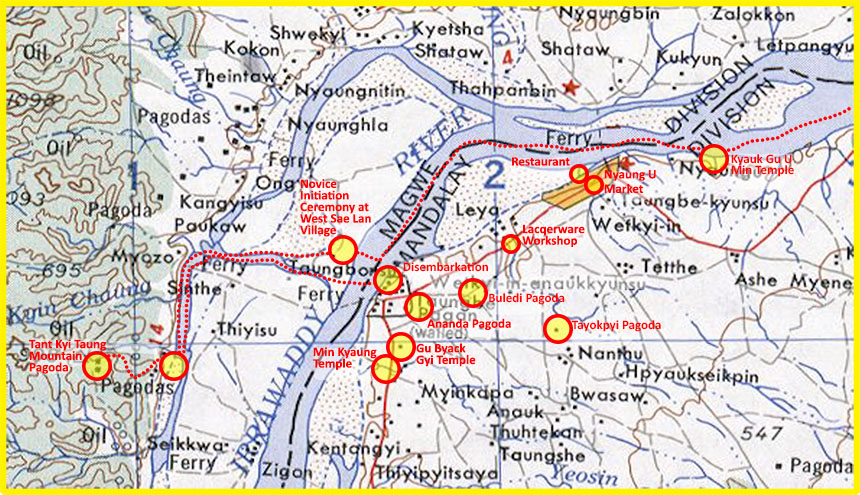
Nyaung U Market

First, we look for some local color with an early morning visit to the central market near our hotel in Nyaung U, a town on the Ayeyarwaddy River about 3 miles north of Old Bagan.
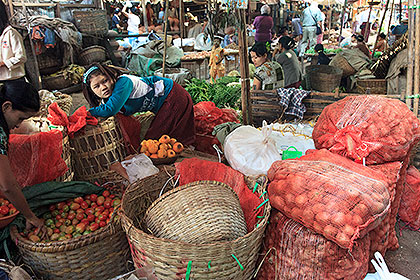

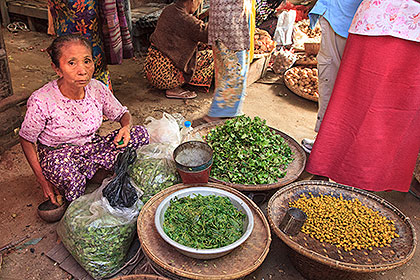
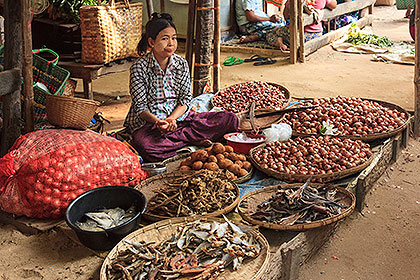
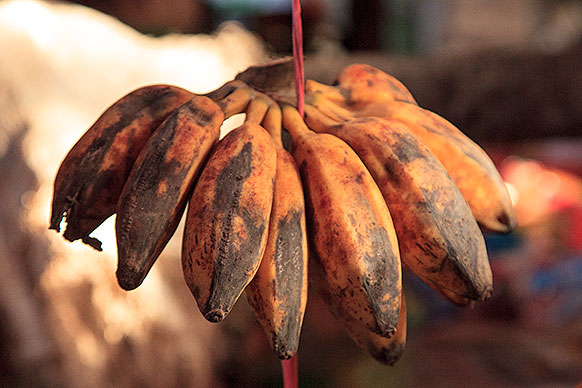
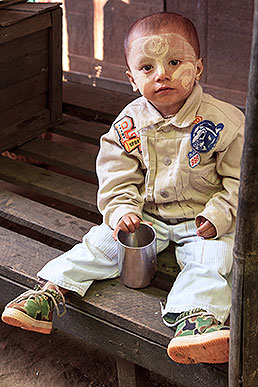
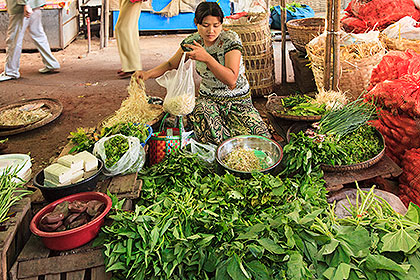
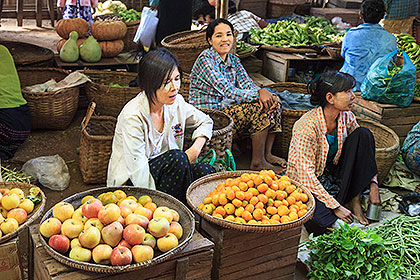
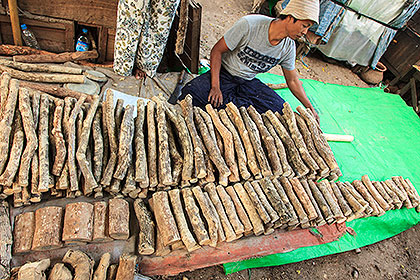
Thanakha logs, which are ground to make thanakha face cream.
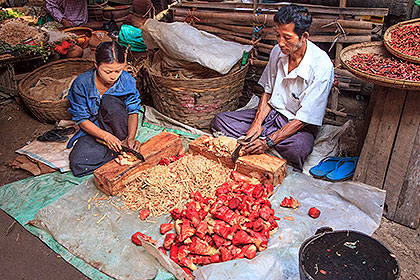
Chopping jack fruit.
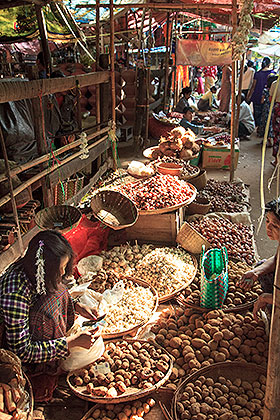
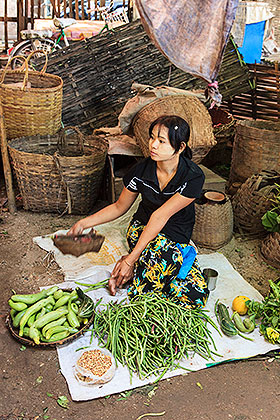
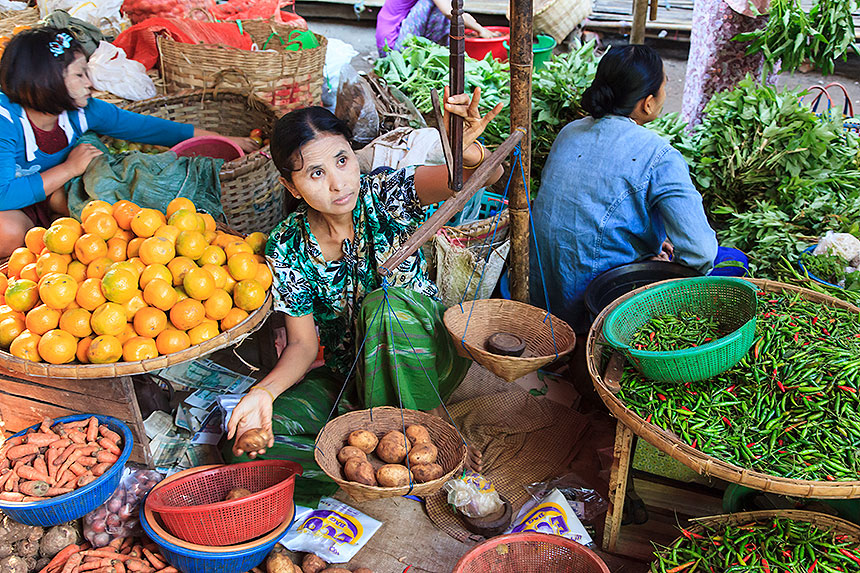
Lacquerware Workshop "Ever Stand"
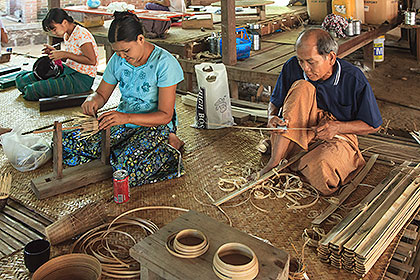
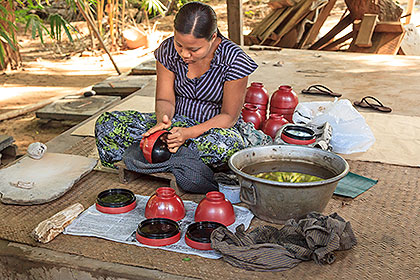
A near-obligatory tourist stop at Bagan is to the lacquerware workshop to see these products being made (with option to purchase).
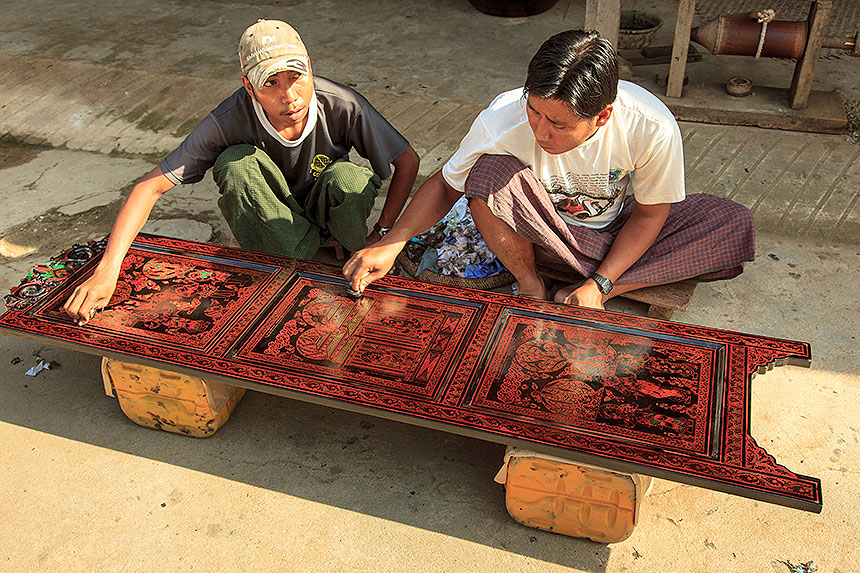
Buledi Pagoda and Views of the Bagan Plain
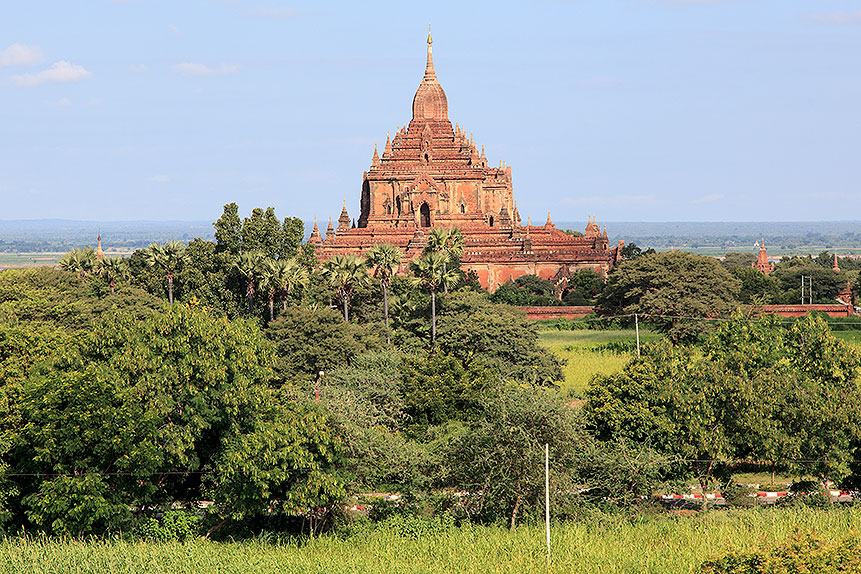
The Buledi Pagoda, shown above, just off the Anawrahta Road between Nyaung U and Old Bagan, makes a convenient high vantage point for viewing the Bagan Plain surrounding it.
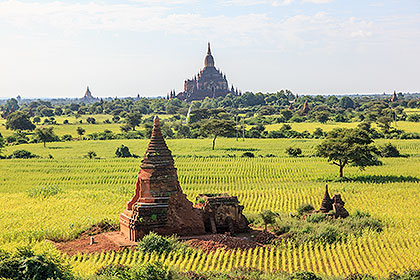
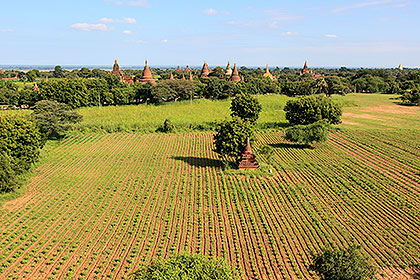
From the Buledi Pagoda we can see many stupas, temples and pagodas. Agriculture is carried on around these structures, most of which receive little, if any, preservation effort. The sheer number of them would overwhelm the resources available.
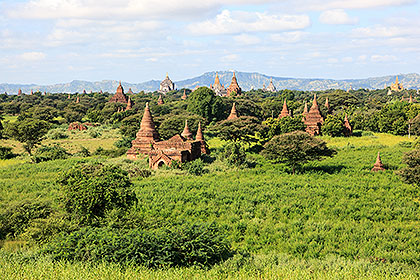
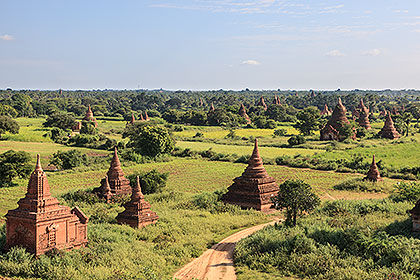

This (above) is a panoramic view, seen from the Buledi Pagoda. Use the slider to pan across it.
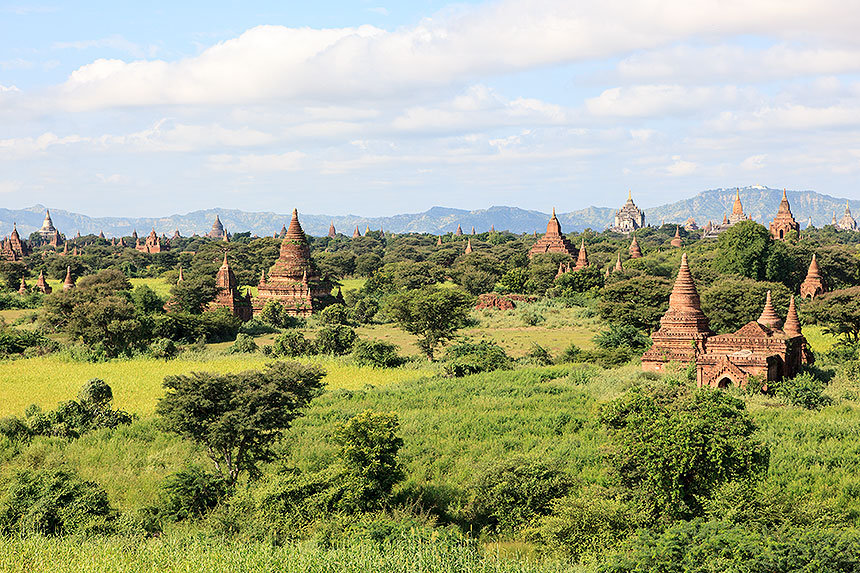
Ananda Temple
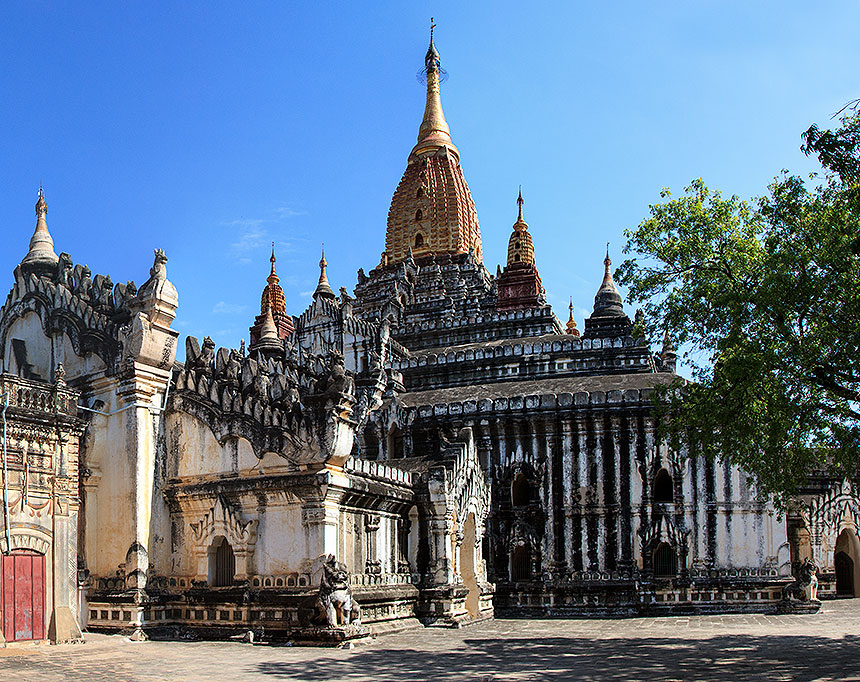
Just outside the city wall of Old Bagan we visit the Ananda Temple, possibly the most architecturally important temple in Burma, built in 1105 AD during the 1084–1113 reign of King Kyanzittha, of the Pagan Dynasty. The temple is named for the Venerable Ananda, Buddha's first cousin, secretary and attendant.
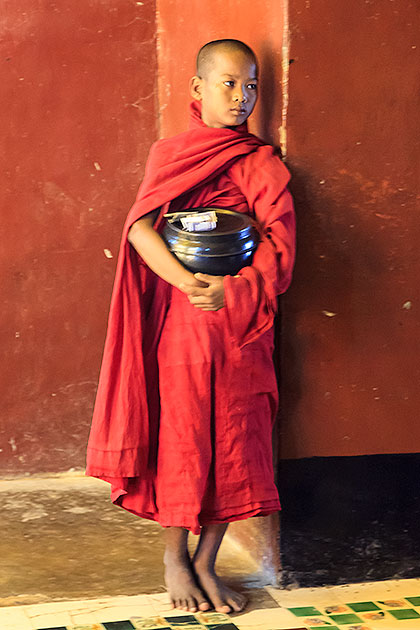
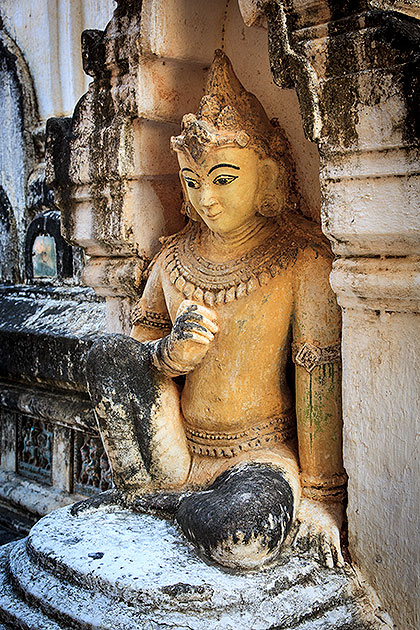
We are welcomed by the friendly stone figure at left, and by the cute begging boy at right, who might, or might not, be a novice monk. It is hard to know for sure, but he is conspicuously begging for money, even though monks' vows do not permit them to possess money. He might just be breaking the rules, but impostors, including former novices, do sometimes appear with novice or monk's robes in public places, to take advantage of the generosity of tourists, who are often unfamiliar with Buddhist customs.
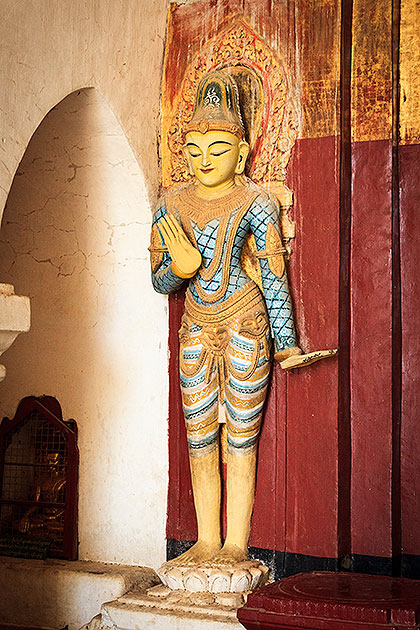
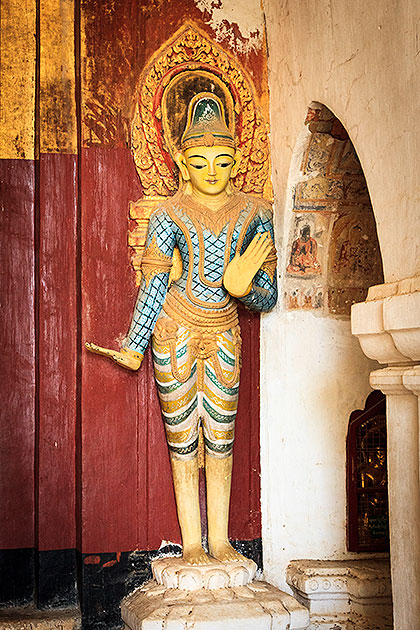
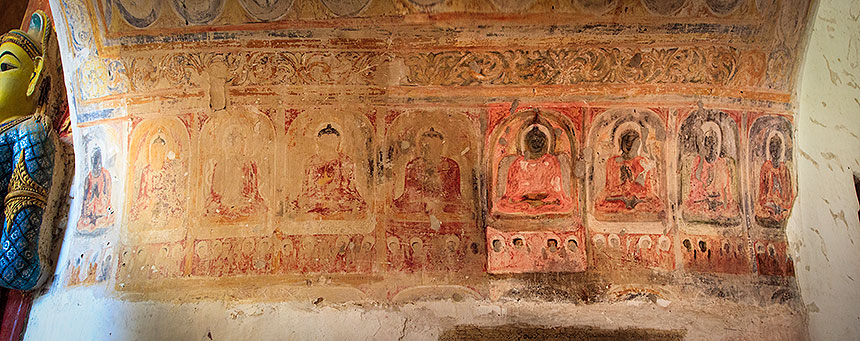
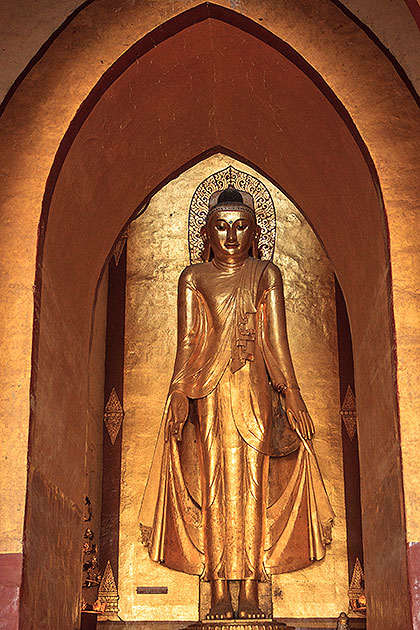
Standing Buddha (Kakusandha) facing north.

Standing Buddha (Kassapa) facing south.
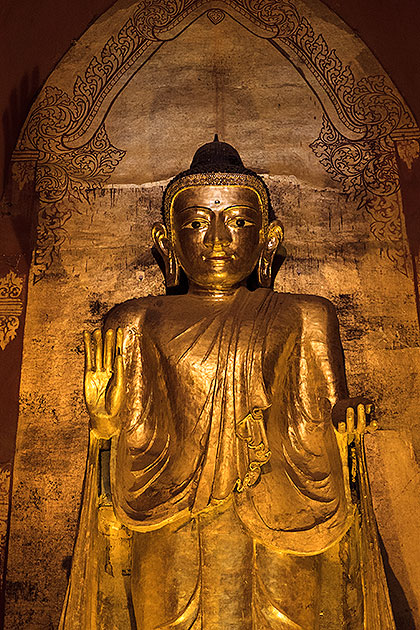
Standing Buddha (Gotama) facing west.
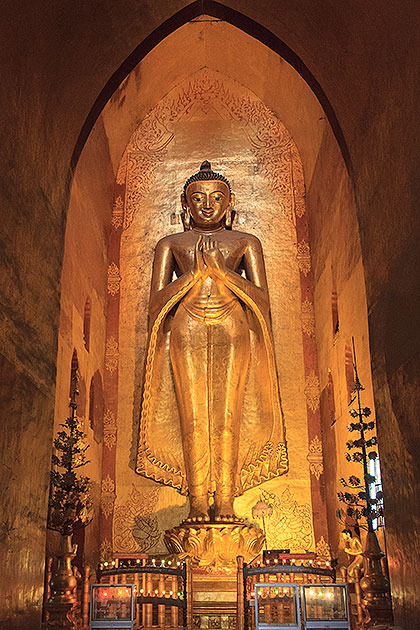
Standing Buddha (Konagamana) facing east.
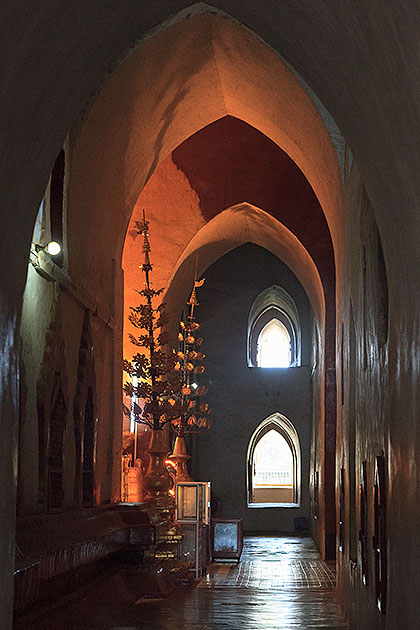
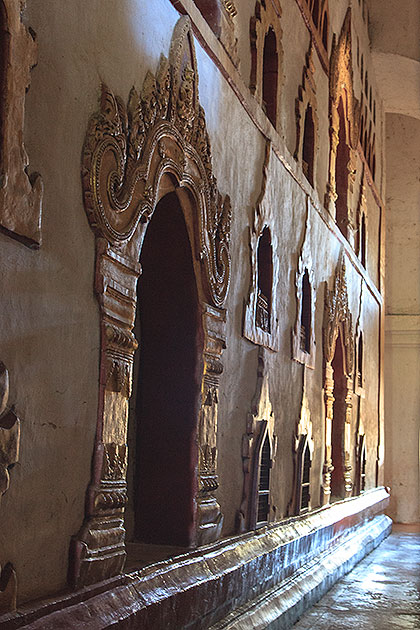
Theraba Gate
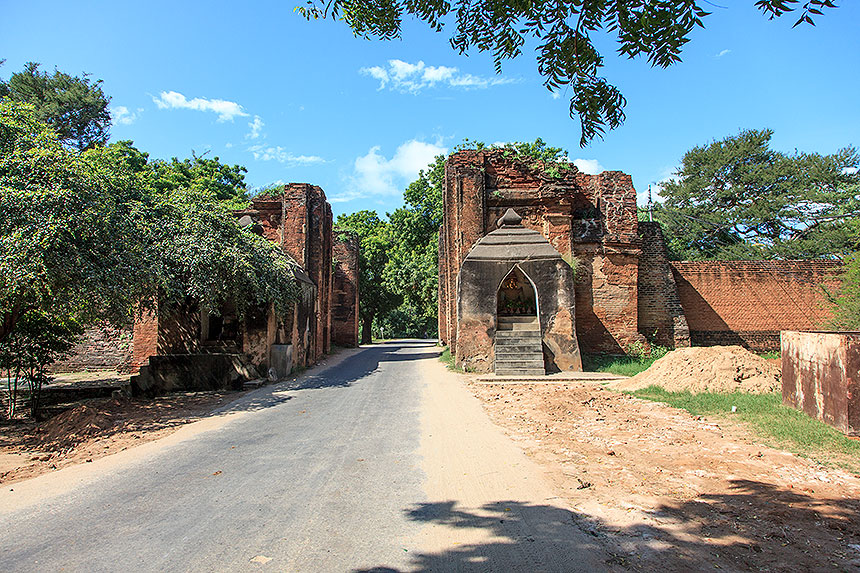
The Theraba Gate (c. 1020) and a bit of adjacent wall is the only part of the original Bagan Wall fortifications still standing.
Gu Byauk Gyi Temple
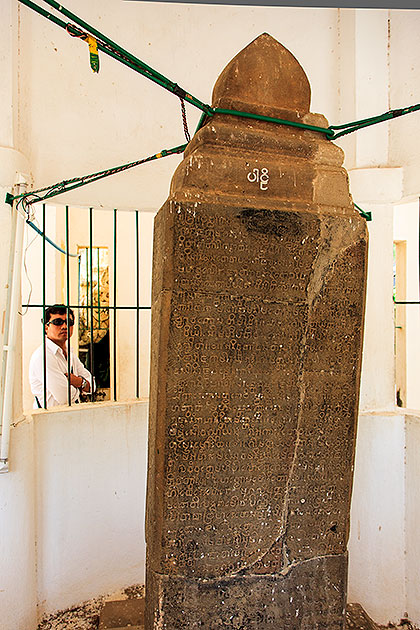
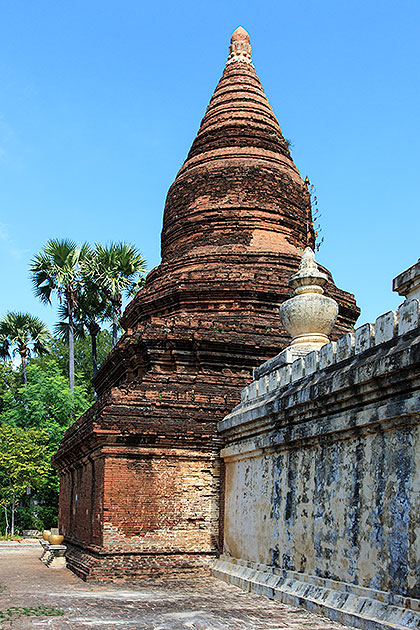
We visit the Gu Byauk Gyi Temple (c. 1113) primarily to see the painted murals inside (where photography was either unfeasible or prohibited), but also to see this four sided pillar (above right), which is protected by a cage and stabilized with straps to prevent earthquake damage. It is a sort of Pagan Rosetta Stone, because it has the same inscriptions in a different language on each side: Pyu, Mon, Old Burmese and Pali. The inscriptions (consecrating the Gu Byauk Gyi Temple) also shed light on the chronology of the Bagan kings.
Manuha Temple and Parinibbana Buddha
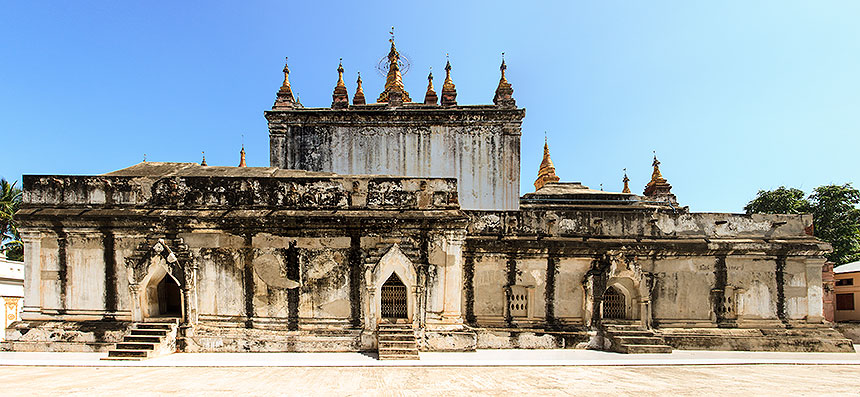
Further south, at Myinkaba, we stop at the Manuha Temple. In the back of the temple (just beyond the three entrances seen above) there is a huge reclining Buddha (Parinibbana Buddha), and there we catch an image with a novice monk paying homage with candles.
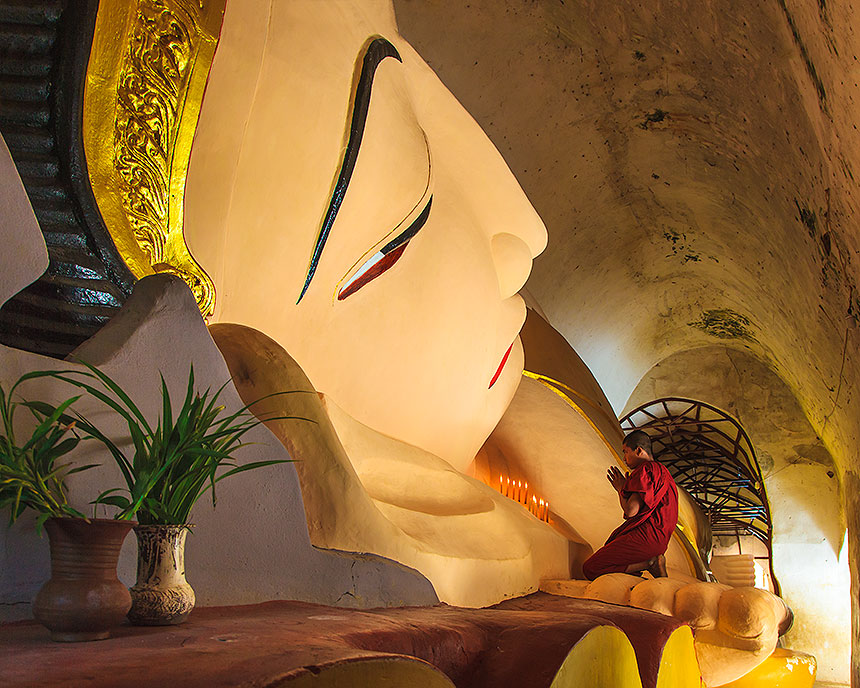
Tayokpyi Pagoda
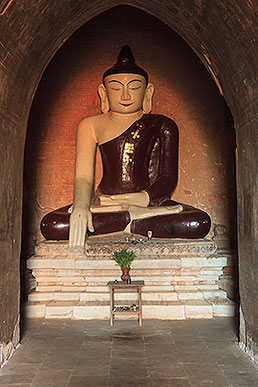
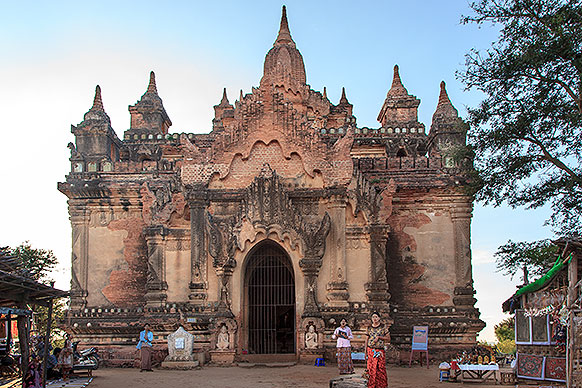
This is the Tayokpyi Pagoda (c. 1248). In the view above we have already climbed from ground level to the platform level. We are interested to see the temple and its seated Buddha, but primarily we have come to see the views from the upper levels of this tall temple, which is in a cluster in the Central Plain about 3 miles SW of Old Bagan. It is late afternoon, and the sun will soon be setting.
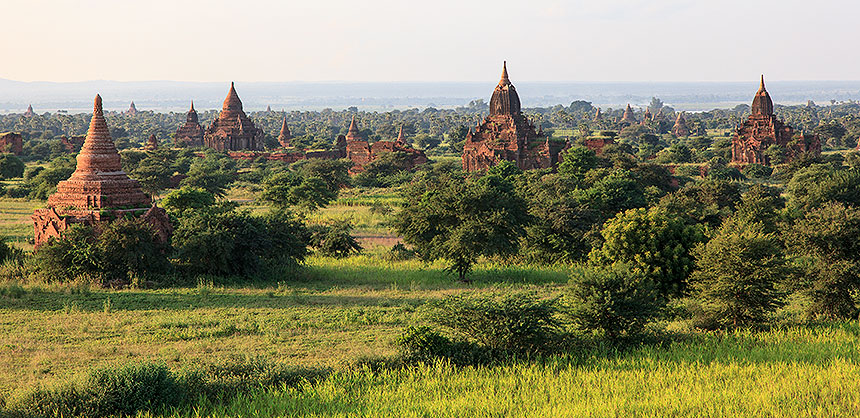
We find some moody shots in the late afternoon light.


This one is a panorama. Use the slider to pan across it.
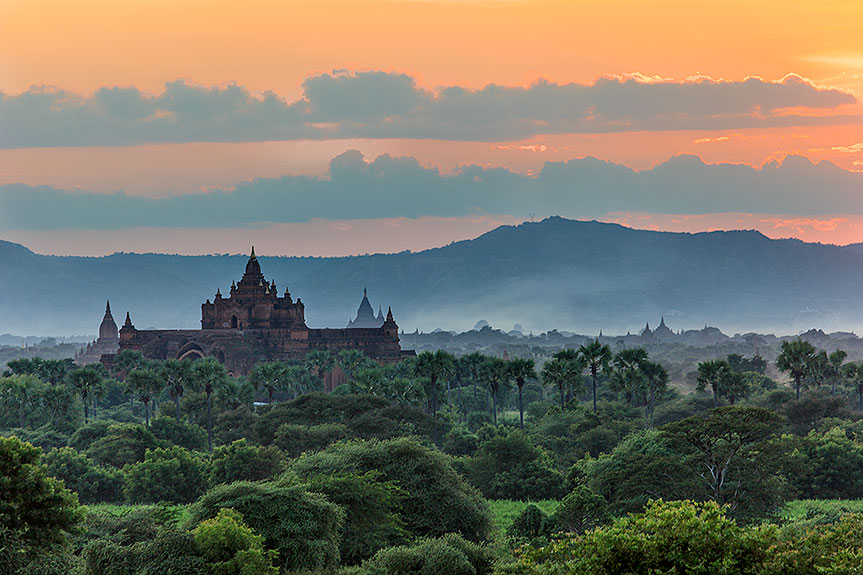

Another panoramic view, as the sun gets low in the west. Use the slider to pan across it.